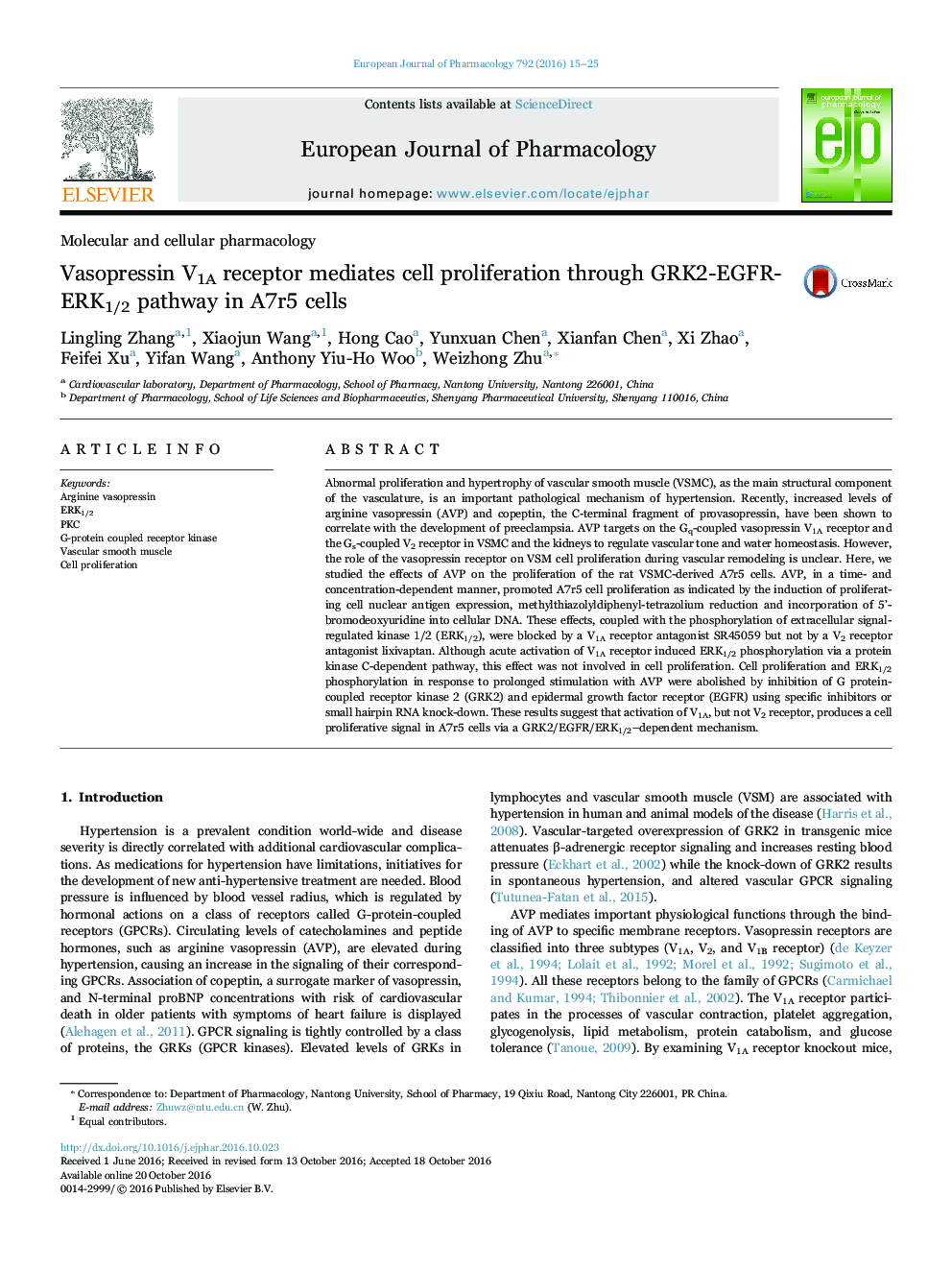| Article ID | Journal | Published Year | Pages | File Type |
|---|---|---|---|---|
| 5554846 | European Journal of Pharmacology | 2016 | 11 Pages |
Abstract
Abnormal proliferation and hypertrophy of vascular smooth muscle (VSMC), as the main structural component of the vasculature, is an important pathological mechanism of hypertension. Recently, increased levels of arginine vasopressin (AVP) and copeptin, the C-terminal fragment of provasopressin, have been shown to correlate with the development of preeclampsia. AVP targets on the Gq-coupled vasopressin V1A receptor and the Gs-coupled V2 receptor in VSMC and the kidneys to regulate vascular tone and water homeostasis. However, the role of the vasopressin receptor on VSM cell proliferation during vascular remodeling is unclear. Here, we studied the effects of AVP on the proliferation of the rat VSMC-derived A7r5 cells. AVP, in a time- and concentration-dependent manner, promoted A7r5 cell proliferation as indicated by the induction of proliferating cell nuclear antigen expression, methylthiazolyldiphenyl-tetrazolium reduction and incorporation of 5'-bromodeoxyuridine into cellular DNA. These effects, coupled with the phosphorylation of extracellular signal-regulated kinase 1/2 (ERK1/2), were blocked by a V1A receptor antagonist SR45059 but not by a V2 receptor antagonist lixivaptan. Although acute activation of V1A receptor induced ERK1/2 phosphorylation via a protein kinase C-dependent pathway, this effect was not involved in cell proliferation. Cell proliferation and ERK1/2 phosphorylation in response to prolonged stimulation with AVP were abolished by inhibition of G protein-coupled receptor kinase 2 (GRK2) and epidermal growth factor receptor (EGFR) using specific inhibitors or small hairpin RNA knock-down. These results suggest that activation of V1A, but not V2 receptor, produces a cell proliferative signal in A7r5 cells via a GRK2/EGFR/ERK1/2-dependent mechanism.
Keywords
Related Topics
Life Sciences
Neuroscience
Cellular and Molecular Neuroscience
Authors
Lingling Zhang, Xiaojun Wang, Hong Cao, Yunxuan Chen, Xianfan Chen, Xi Zhao, Feifei Xu, Yifan Wang, Anthony Yiu-Ho Woo, Weizhong Zhu,
